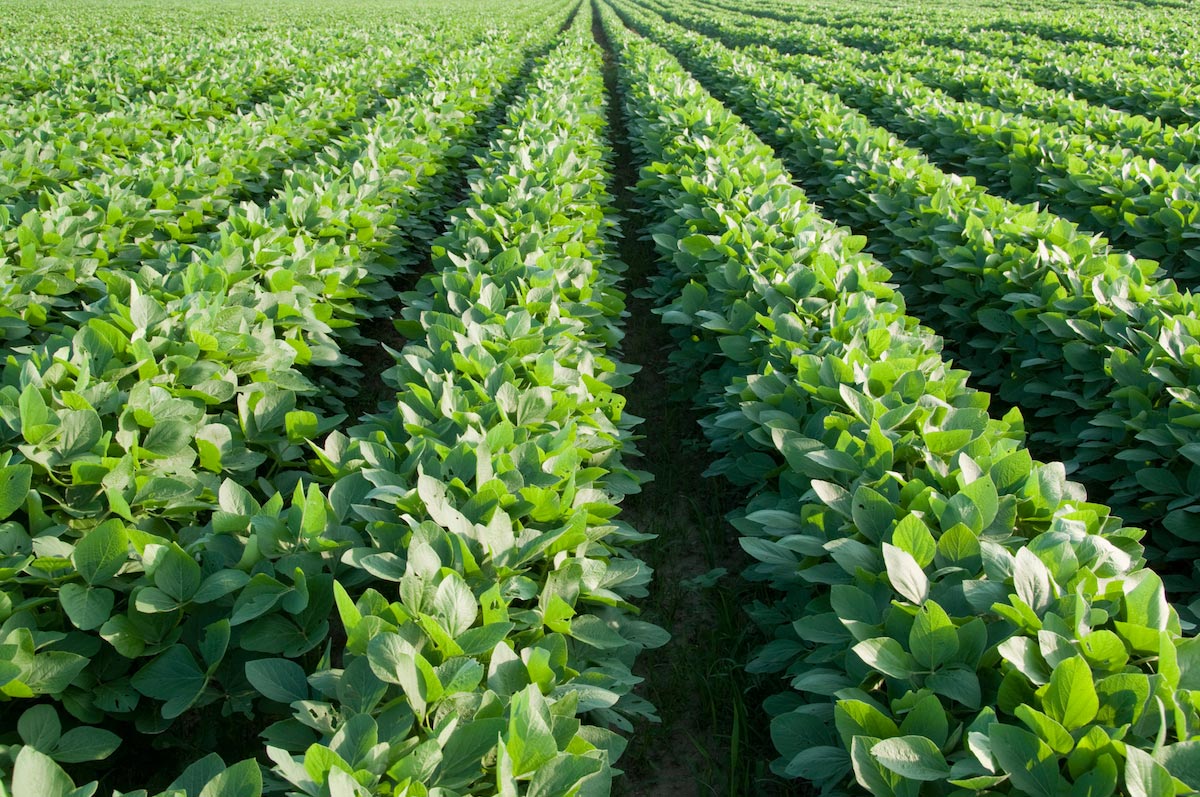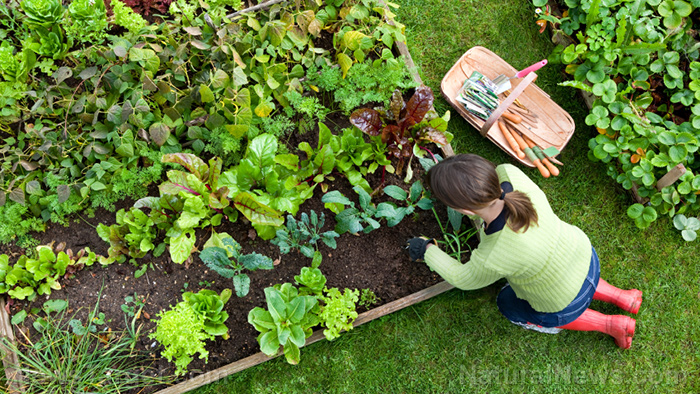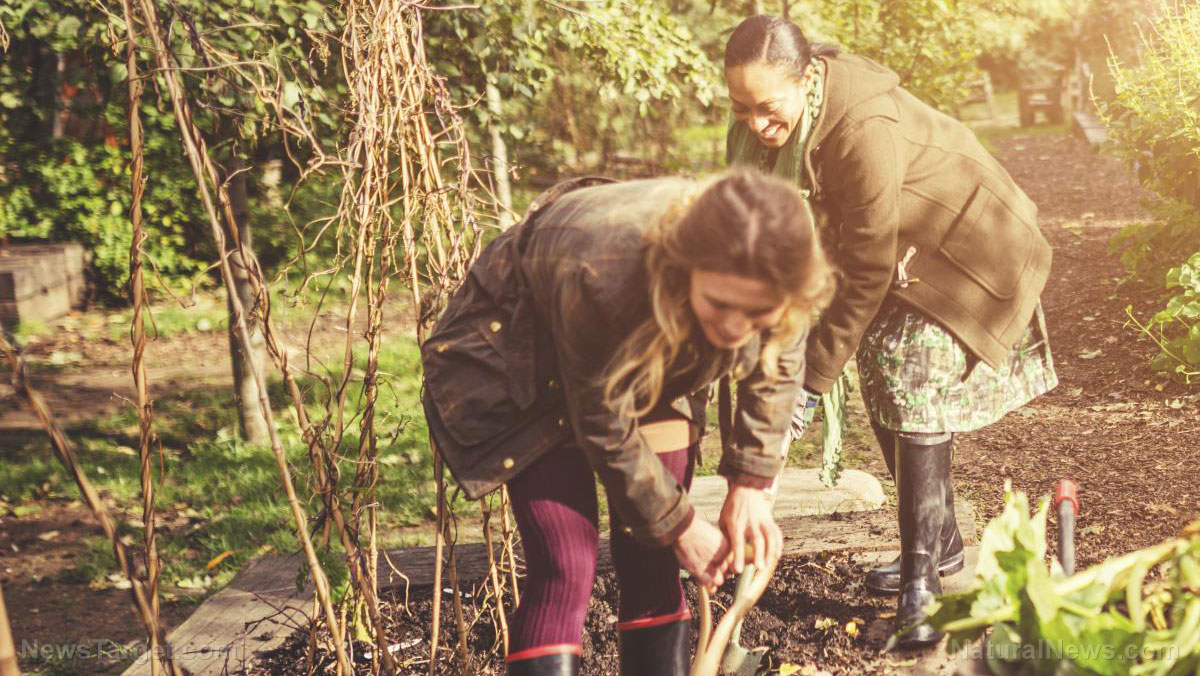Home gardening tips: How to start tomatoes from seed
12/09/2022 / By Zoey Sky

Familiarizing yourself with home gardening basics means improving your skill set so you can eventually start crops that are beyond those that beginners are planting.
If you’re not sure where to start, try learning how to start tomatoes from seed.
Starting tomato plants from seed offers several benefits. First, it gives you an early start to enable a longer harvest. It can also help prevent diseases, which means you make the most of your plants in the garden.
Knowing how to start tomatoes from seed can help you save on groceries, especially since prices are steadily increasing store prices. If you know how to start tomatoes from seed, you no longer have to spend money on garden shop tomato plants. (Related: Home gardening 101: 5 Secrets for growing great tomatoes.)
Get the right seeds
The most important step is to get the right seeds for starting.
Ideally, you should have a steady supply of tomato seeds from previous harvests. If you are new to seed starting, try new varieties.
Here are some options to consider:
Tomatoes that are beginner-friendly
If this is your first time growing tomatoes, you may want to grow a variety that’s large, delicious and produces a large harvest.
- Beefsteak
- Celebrity
- Italian Heirloom
- Primo Red
Tomatoes for fresh eating
Cherry tomatoes are an ideal choice if you like eating fresh tomatoes. They can also be used to make sauces with a hint of sweetness.
- Amethyst Cream
- Sakura
- Sungold
- Sunsugar
- Super Sweet 100
- Sweet Million
- Yellow Pear
Low-acid or yellow tomatoes
If you do not eat raw tomatoes, you should consider low-acid or yellow tomatoes.
For example, Lemon Boy tomatoes grow quite large. They also ripen early and are great for tomato sauce.
Amana Orange grows larger than Lemon Boy tomatoes. As an heirloom variety, you can save Amana Orange seeds to plant by next spring.
- Amana Orange
- Lemon Boy
- Oxheart Yellow
- Yellow Pear
Sweet tomatoes
Sweet tomatoes are perfect if your priority is taste.
Some large varieties are also rather sweet, such as:
- Brandywine
- Costoluto Fiorentino
- Ferris Wheel
- Mortgage Lifter
- Sicilian Saucer
Tomatoes for sauces
If your family loves pasta, choose tomatoes that are suited for pasta sauces like:
- Amish Paste
- Roma
- San Marzano
- Supremo
Sunrise Sauce is an orange, low-acid paste tomato. It is very productive and has a long shelf life. You can store it on your counter from September to November without it going bad.
Oxheart tomatoes are also great for sauces and they grow very big. These barely have any seeds and are so satisfying to grow for pasta sauces.
Start early and use peat pellets
If you want to try paste tomatoes, experiment with San Marzano Gigante. Note that if you are in an area with a shorter season, you may experience some drawbacks.
The days to harvest San Marzano varieties is 90. If you consider the frost-free days in your area you might have trouble growing them.
But if you have a microclimate with temperatures that are at least 20 degrees warmer, you might be able to grow San Marzano tomatoes.
To start, calculate 90 days from the normal transplanting date of June. You will end up with Sept. 1, meaning you don’t have a lot of time to bring in a crop.
If this is an issue, choose a smaller San Marzano variety that matures at least two to three weeks sooner.
If you want bigger San Marzano tomatoes, you can try extending the harvest by starting your seeds early. This means starting tomato seeds six to eight weeks before you transplant them into your garden.
Based on the calculated dates, you should start the seeds from April 1 to 15.
For large, leafy plants with well-developed roots, you should start the tomato seeds as early as Feb. 1 to 15.
To start tomato seeds, use peat pellets. These pellets hold the right amount of water, which can ensure that your starters do well.
If you don’t have peat pellets or a special seed starting mix from the garden shop, you can stick with sterilized soil from your garden. Always pasteurize pots before planting to avoid introducing diseases to plants that are already established in your home garden.
Start more seeds than you need
Before finalizing how many seeds you want to start, add some extras if you want to give away plants to family and friends or if you plan to sell them for extra money.
Remember that tomatoes germinate best at temperatures of 70 to 80 F, which is warmer than most people keep their homes in winter. If you’re worried, check which areas of your house have a warm spot for starting seeds.
Gardeners often keep germinating seeds in warm areas like the top of the refrigerator. If this isn’t applicable to you, keep your starter seeds on the mantle above a wood stove insert if you have one.
If you can’t find a warm place for germinating seeds indoors, you may need a heat mat for seedlings.
Take notes so you don’t miss the timing for your seeds. The first set of leaves usually emerges after seven to 10 days.
True leaves will start developing several days later. By then, the seedlings will need to be placed under grow lights or in a very sunny window in your home.
If your windows don’t get enough sun in the winter for growing, use LED grow lights.
Try to keep the plants about two inches under the lights for maximum light coverage and some heat from the lights. Keep the lights on for 12 to 16 hours daily and water as needed.
Transplanting seeds
When the plants grow two sets of true leaves, transplant them into a larger container. You can use milk cartons or washed pint-sized sour cream containers for the first transplanting. Get quart-sized yogurt containers for the second transplanting.
Try not to touch the main stem of tomato seedlings since they have juicy tissues that are easily bruised. Bruises in the stems will act as entry points for fungi that cause seedlings to rot.
The main stem can also be damaged if a seedling falls over, which can happen if you have a weak-stemmed tomato seedling that develops into a top-heavy seedling with new leaves. Prevent this by sprinkling additional seed starting mix around the base of leggy seedlings, then press it in.
Add support for the seedlings until you can repot them by propping up leaners with toothpicks or a wooden skewer.
When transplanting, try to use taller containers instead of wider ones so you can send the roots deep. Whenever you transplant, add a shallow layer of soil on the bottom to cushion the roots.
For the first transplanting, remove the first leaves (cotyledons) carefully. Do not strip the leaf down the stem and avoid taking some of the stem with it.
Tomatoes are unique because their stems have little hairs emanating from the stem that can develop into roots.
Set the tomato seedling on top of the thin layer of soil and carefully fill the soil around it. Water seedlings well and fertilize lightly weekly. You can repeat this step several times before the tomatoes are eventually planted in your garden.
Your tomatoes should also be hardened against strong winds. Like all plants, tomatoes need the wind to develop strong stalks. You can do this by gently brushing your hand over the tops of the tomato plants several times a day.
Follow all of these stops to produce large, lush tomato plants that cost less compared to buying them. Starting tomatoes from seeds means you will have plants that are healthier and free from diseases or pests.
Watch the video below for eight tips for a great tomato harvest.
This video is from the Alex Hammer channel on Brighteon.com.
More related stories:
Home gardening tips: How to grow onions from seed.
Home gardening 101: Make the most out of your yard by planning an edible landscape.
Home gardening for preppers: 7 Medicinal herbs you can propagate from cuttings.
Sources include:
Submit a correction >>
Tagged Under:
food independence, food supply, green living, home gardening, homesteading, how-to, off grid, onions, organic farming, organics, preparedness, prepper, prepping, survival, sustainable living, tips, veggie
This article may contain statements that reflect the opinion of the author
RECENT NEWS & ARTICLES
COPYRIGHT © 2017 HARVEST NEWS




















